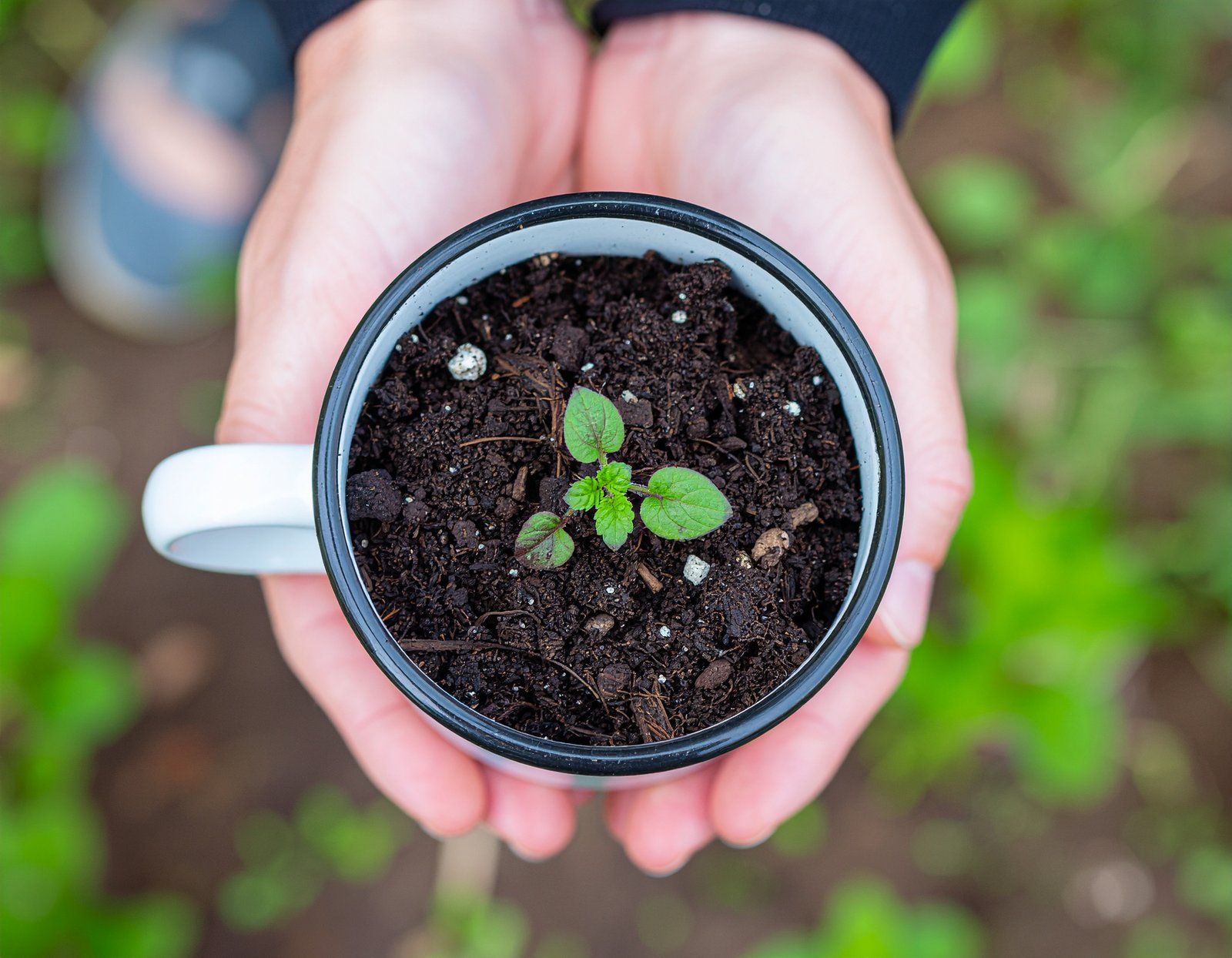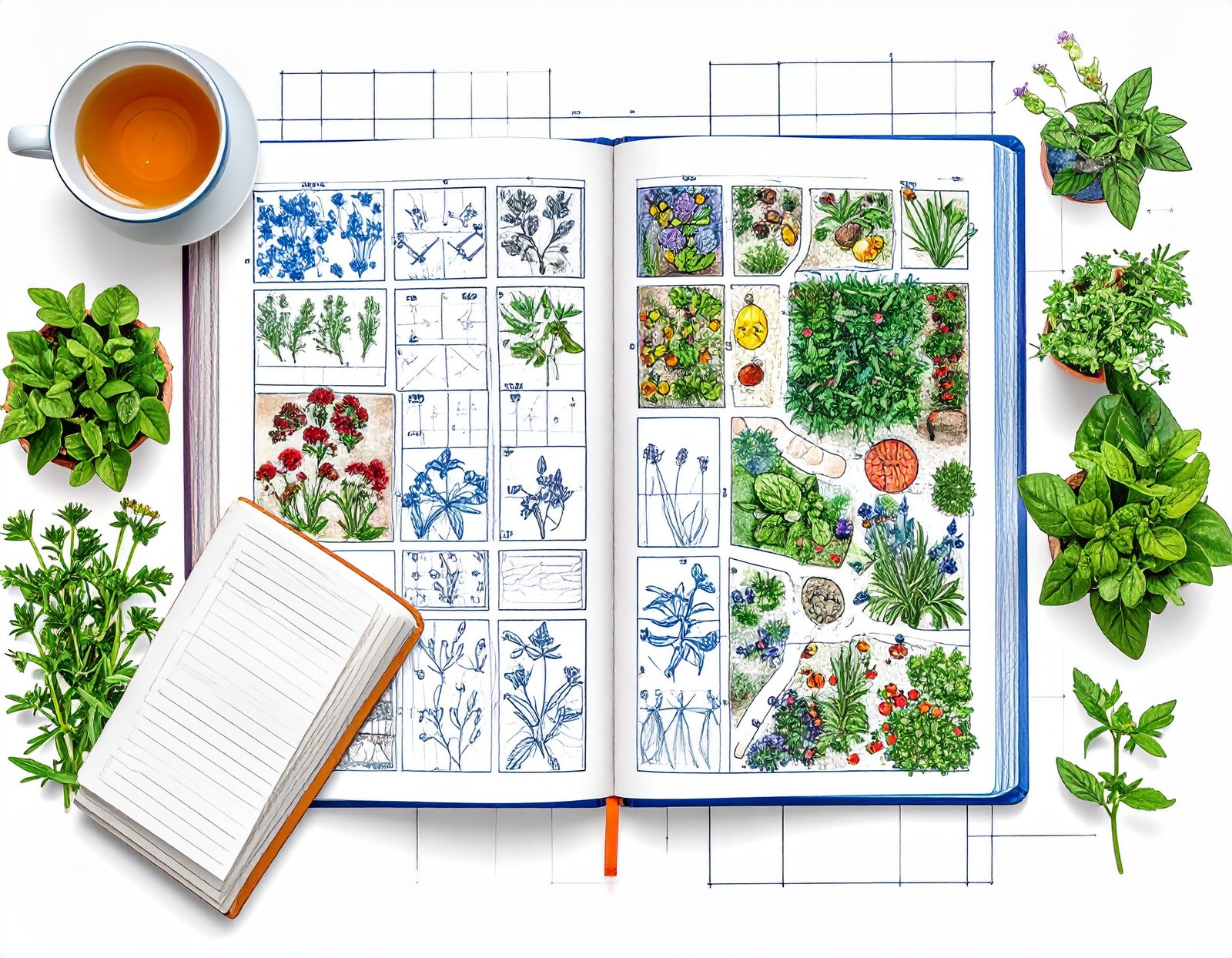
Peppermint and Its Perfect Companions: Growing a Balanced and Productive Herb Patch
Blend peppermint, licorice, ginger, aloe, and turmeric—easy tea recipes to calm your digestion and gut.
Download Free GuidePeppermint + Chamomile: The Calm & Digestive Duo
Peppermint and chamomile are a classic herbal pairing that calm both the stomach and the mind. Together, they form a gentle yet powerful blend that soothes digestive tension, eases bloating, and promotes relaxation after meals. Peppermint’s cooling menthol helps relieve cramping and indigestion, while chamomile’s natural anti-inflammatory and sedative compounds quiet the nervous system and support restful balance throughout the body.
Enjoyed as a warm tea, this duo works in perfect harmony—peppermint clears and refreshes, while chamomile softens and settles. A cup after dinner can help reduce gas, support healthy digestion, and prepare your body for deeper rest. In this section, we’ll explore simple ways to combine these two herbs for a calm stomach and a peaceful state of mind.
- Benefits: Chamomile attracts beneficial insects and balances peppermint’s energy
- Medicinal Synergy: Both soothe digestion, reduce gas, and calm the nervous system
- Growing Needs: Full sun to light shade, consistent moisture, good drainage
- Gardener’s Tip: Chamomile can act as a peacekeeper—its calming aroma complements peppermint’s vigor and intensity.

Peppermint + Lemon Balm: Mood & Mind Boosters
Peppermint and lemon balm are a refreshing herbal duo that lift the mood, calm the mind, and support emotional balance. Both belong to the mint family and share a cooling, cleansing nature—yet lemon balm adds a gentle, citrusy sweetness that soothes the nerves and brightens the spirit. Together, they help ease anxious thoughts, enhance focus, and gently energize without the jitters of caffeine.
Enjoyed as a tea or infused water, peppermint clears mental fog while lemon balm steadies the mood, creating a perfect blend for moments of stress or fatigue. Their combined aroma can also refresh a space and uplift your energy throughout the day. In this section, we’ll explore easy ways to use peppermint and lemon balm to nurture both mental clarity and emotional calm—naturally and deliciously.
- Benefits: Both from the mint family, they share similar care needs and keep pests at bay
- Medicinal Synergy: Peppermint clears the mind; lemon balm soothes anxiety and boosts mood
- Growing Needs: Partial shade, rich soil, and space to spread
- Gardener’s Tip: Use containers or edging—both herbs love to spread and can quickly overtake garden beds.
VivoGut: 14 Nutrients & Herbs for Digestive Balance
- Features a unique blend of herbs, minerals, probiotics, and natural nutrients
- No harsh chemicals or synthetic fillers
- Works with your body’s natural rhythms for gentle support
Peppermint + Lavender or Rosemary: Sensory Balance
Peppermint blends effortlessly with lavender and rosemary to create a harmony of calm and clarity—a true sensory balance. Lavender softens peppermint’s sharpness with its floral tranquility, helping quiet the mind and ease tension, while rosemary’s earthy aroma adds a refreshing lift that sharpens focus and restores mental energy. Together, they form a holistic trio that both soothes and awakens, perfect for moments when you need relaxation without losing alertness.
Try these pairings as herbal teas, bath infusions, or room steams. Peppermint + lavender calms nerves and supports better sleep, while peppermint + rosemary revitalizes your senses and clears mental fatigue. In this section, we’ll explore how to use these powerful plant combinations to find that sweet spot between relaxation and renewal—naturally, through scent and flavor.
- Benefits: Lavender and rosemary deter harmful insects while offering aromatic contrast
- Medicinal Synergy: Peppermint cools and soothes; lavender calms; rosemary enhances focus and memory
- Growing Needs: Sun-loving (lavender/rosemary) + shade-tolerant (peppermint) — position accordingly
- Gardener’s Tip: Grow these in nearby containers or staggered beds to balance light preferences while encouraging biodiversity.
Finessa: Plant-Based Gut & Liver Support
- Features Taraxacum, Silymarin (Milk Thistle), Cascara, Cynara (Artichoke), Turmeric, Licorice, Probiotics
- High in polyphenols and active plant compounds
- Crafted for gentle cleansing and total digestive harmony
Peppermint + Calendula: Skin-Soothing Allies
Peppermint and calendula make a powerful herbal duo for cooling, cleansing, and calming the skin. Peppermint’s menthol provides instant refreshment and helps reduce inflammation, while calendula’s gentle, golden petals promote healing and hydration. Together, they work to soothe irritation, balance oil, and support the skin’s natural repair process—perfect for sun-stressed, acne-prone, or sensitive skin.
Used in toners, salves, or bath soaks, this combination delivers both purity and comfort. Peppermint invigorates circulation and leaves a clean, tingling freshness, while calendula nourishes with its restorative touch. In this section, we’ll explore simple ways to combine these two herbs for radiant, resilient skin—naturally refreshed and renewed from the inside out.
- Benefits: Calendula attracts pollinators and repels harmful pests
- Medicinal Synergy: Peppermint cools rashes and inflammation; calendula heals skin wounds and supports regeneration
- Growing Needs: Full sun (Calendula), partial sun (Peppermint) — plant calendula in front where it receives more light
- Gardener’s Tip: Harvest both for skin-soothing salves and cooling herbal compresses.

Grow a Healing Patch That Works in Harmony
When peppermint is grown with thoughtful companions, you create a garden space that’s not only beautiful and productive—but also balanced and healing. Plant your own herbal patch and start harvesting peace, clarity, and digestive comfort.
Subscribe for More Companion Planting GuidesThis post is for informational purposes only and does not substitute for medical advice. Consult a qualified health professional before using herbs medicinally, especially if you are pregnant, nursing, or taking medication.
These statements have not been evaluated by the FDA. Content is not intended to diagnose, treat, cure, or prevent any disease.
- Bosabalidis, A. “Peppermint Companion Planting.” Horticultural Science, 2018.
- Royal Horticultural Society. rhs.org.uk
- Wegener, T. “Herb Pairing for Wellness.” Phytotherapy Research, 2020.